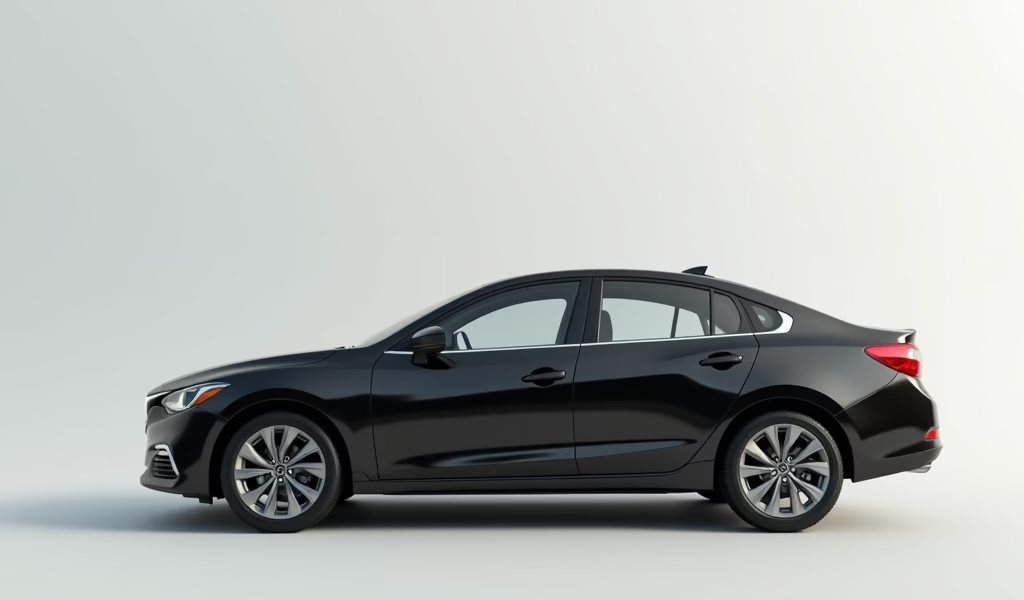Overview
This article explains that “full coverage” car insurance combines liability, collision, and comprehensive protections while offering strategies to find affordable options through comparing quotes, leveraging discounts, adjusting deductibles, and considering vehicle choice. It emphasizes that the best insurance value balances adequate protection with reasonable cost rather than simply seeking the lowest premium, and recommends regularly reviewing coverage as personal circumstances change.
Table of Contents
- Understanding Full Coverage Car Insurance
- Key Components of Full Coverage Insurance
- Factors Affecting the Cost of Full Coverage Insurance
- Finding the Cheapest Full Coverage Options
- Insurance Discounts You Shouldn’t Miss
- Comparing Insurance Companies: Beyond the Price Tag
- Balancing Coverage and Cost: Smart Strategies
- Conclusion
- Frequently Asked Questions
Understanding Full Coverage Car Insurance
Let’s clear something up right off the bat: “full coverage” isn’t actually an insurance industry term. Surprised? Most folks are. What we commonly call full coverage car insurance is actually a combination of different coverage types that together provide comprehensive protection for your vehicle and financial well-being. As someone who’s spent years helping drivers navigate these waters, I can tell you that understanding this distinction is your first step toward finding the cheapest car insurance full coverage options.
At its core, full coverage typically includes liability insurance (which is mandatory in most states), collision coverage, and comprehensive coverage. Think of it as a three-layer safety net designed to protect you financially after accidents, theft, vandalism, or natural disasters. Unlike minimum coverage, which only protects other people from damages you cause, full coverage protects your vehicle too.
But here’s where many drivers get confused—and potentially overpay. Full coverage doesn’t mean you’re protected from absolutely everything. There are still limits, deductibles, and exclusions to consider. That’s why I always tell my customers: the goal isn’t just finding cheap full coverage insurance, but finding the right coverage at the best possible price.
Key Components of Full Coverage Insurance

When we talk about full coverage insurance, we’re really talking about a package of different protections. Let’s break down what’s typically included in this automotive safety net:
Liability Coverage: This is the foundation of any auto insurance policy and is required by law in nearly every state. It covers bodily injury and property damage you cause to others in an accident. Think of it as protection for your assets if you’re at fault in a collision. Standard liability limits are often written as three numbers (e.g., 100/300/50), representing thousands of dollars in coverage for bodily injury per person, bodily injury per accident, and property damage, respectively.
Collision Coverage: This pays for damage to your own vehicle after a collision, regardless of who’s at fault. Whether you hit another car, a tree, or a guardrail, collision coverage has you covered (minus your deductible). For newer or more valuable vehicles, this coverage is practically essential, though it becomes less cost-effective as your car ages and decreases in value.
Comprehensive Coverage: Often misunderstood, comprehensive coverage handles damage to your car from almost anything except collisions. Theft, vandalism, fire, flood, hail, falling objects, and even deer strikes fall under this umbrella. According to Insurance Information Institute data, vehicle theft alone affects hundreds of thousands of drivers annually, making this coverage particularly valuable.
Beyond these core components, truly robust full coverage might also include:
- Uninsured/Underinsured Motorist Coverage: Protects you if you’re hit by a driver with insufficient or no insurance
- Medical Payments or Personal Injury Protection: Covers medical expenses regardless of fault
- Gap Insurance: Particularly valuable for new car owners with loans or leases
- Rental Car Reimbursement: Covers temporary transportation while your vehicle is being repaired
- Roadside Assistance: Provides help with breakdowns, lockouts, and other roadside emergencies
Understanding these components is crucial when shopping for the cheapest car insurance full coverage. After all, you can’t effectively compare prices until you know exactly what you’re paying for. Some companies might offer lower prices by excluding certain coverages that others include as standard. Remember, the goal is adequate protection at an affordable price, not just the lowest number.
Factors Affecting the Cost of Full Coverage Insurance
Now that we understand what full coverage entails, let’s talk dollars and cents. Why might your neighbor pay significantly less (or more) than you for seemingly identical coverage? The truth is that insurance companies evaluate dozens of factors when calculating your premium. Some you can control, others you can’t.
Your driving record stands as perhaps the most significant factor within your control. A clean record free of tickets, accidents, and claims can save you hundreds, even thousands annually. Insurance companies view your driving history as the best predictor of future risk. A single at-fault accident can raise your rates by 28-45% according to industry studies, and that increase often lasts 3-5 years.
Credit history plays a surprisingly large role too (except in states where this practice is banned). Insurers have found statistical correlations between credit scores and claim likelihood. The difference between excellent and poor credit could nearly double your premium in some cases. If you’re working on improving your credit, you might see auto insurance savings as an additional reward.
Your vehicle itself dramatically impacts your full coverage costs. Insuring a $50,000 luxury SUV naturally costs more than covering a $15,000 compact car. But it’s not just about the price tag—repair costs, theft rates, safety ratings, and even the color can influence your premium. Before purchasing a new vehicle, consider getting insurance quotes to avoid unpleasant surprises.
Location factors heavily into the equation as well. Urban drivers typically pay more than rural ones due to higher accident, vandalism, and theft rates. Even moving across town could change your rates if you’re entering an area with different crime statistics or traffic patterns. State regulations and local weather patterns (think hail-prone regions) also affect regional pricing variations.
Age and gender continue to influence rates in most states, with young male drivers facing the steepest premiums. The good news? These factors become less significant as you age, with rates typically stabilizing after 25 and often decreasing after 50—at least until senior years when rates may climb again.
Other factors include your annual mileage (less driving equals less risk), your occupation (some jobs correlate with safer driving), your education level, and even your marital status. Understanding these variables helps explain why the cheapest car insurance full coverage for one person might be entirely different for another.
Finding the Cheapest Full Coverage Options
Armed with knowledge about what affects your rates, let’s get down to the business of finding those elusive cheap full coverage deals. The secret? There is no single “cheapest” company for everyone. The insurer offering your neighbor rock-bottom rates might quote you a premium that makes your eyes water.
Start your search by gathering quotes from at least five different insurers. This process has become remarkably easier with online comparison tools, though I still recommend making at least a couple of phone calls. Some insurers offer their best rates through direct conversations, and an agent might spot discounts an algorithm misses. Be sure you’re comparing identical coverage limits and deductibles across all quotes for a fair comparison.
Consider looking beyond the big-name insurers. Regional and smaller insurance companies often offer competitive rates because they have lower overhead costs and can focus on specific geographic areas. Companies like Erie Insurance, Auto-Owners Insurance, and various farm bureau insurance programs consistently rank high in both customer satisfaction and affordability in their operating territories.
Don’t overlook insurance bundling opportunities. Combining your auto and homeowners or renters insurance with the same company typically saves 5-25% on both policies. Even if a company isn’t the absolute cheapest for auto insurance alone, the bundle discount might make the total package more affordable than splitting your coverage between insurers.
Usage-based insurance programs represent one of the most innovative ways to secure cheap full coverage insurance for safe drivers. These programs use telematics devices or smartphone apps to track your actual driving habits—speed, braking, acceleration, time of day, and mileage. Good drivers can save up to 30-40% through programs like Progressive’s Snapshot, Allstate’s Drivewise, or State Farm’s Drive Safe & Save.
Re-evaluate your coverage needs periodically. As your vehicle ages, you might reach a point where the cost of collision and comprehensive coverage exceeds the potential payout. A general rule of thumb suggests considering dropping these coverages when your annual premium exceeds 10% of your car’s current value.
Insurance Discounts You Shouldn’t Miss

Discounts can dramatically reduce your full coverage insurance costs, yet many drivers leave these savings on the table simply because they don’t ask. Let’s explore the discounts you should never miss when hunting for the cheapest car insurance full coverage.
Safe driver discounts reward those with clean driving records. Generally, three to five years without accidents or traffic violations can qualify you for savings between 10-40%. Some companies also offer additional discounts for taking defensive driving courses, even for experienced drivers. A few hours in a classroom or online course could save you money for years.
Vehicle safety features often translate directly into premium reductions. Anti-theft devices, anti-lock brakes, daytime running lights, and advanced driver assistance systems (like automatic emergency braking) can each chip away at your premium. When shopping for a new vehicle, remember that these safety features might partially offset higher insurance costs for newer models.
Professional and organizational affiliations often come with insurance perks. Military members, federal employees, teachers, engineers, scientists, alumni association members, and those belonging to professional organizations frequently qualify for special rates. Even membership in warehouse clubs like Costco sometimes includes access to discounted insurance programs.
Educational discounts can provide substantial savings. Good student discounts for young drivers maintaining at least a B average can reduce premiums by up to 25%. Many insurers also offer distant student discounts when your college student leaves their car at home while attending school more than 100 miles away.
Payment preferences can even save you money. Many insurers offer discounts for paperless billing, automatic payments, paying in full, or simply signing up online. These small discounts of 2-10% each can add up significantly over time. Setting up automatic payments also eliminates the risk of coverage lapses due to forgotten payments, which can dramatically increase your rates.
When discussing discounts with agents, always ask this crucial question: “Are there any other discounts I might qualify for?” Insurance representatives don’t always proactively mention every possible discount, but they’ll usually be forthcoming when asked directly. A five-minute conversation could uncover savings you never knew existed.
Comparing Insurance Companies: Beyond the Price Tag
While finding the cheapest car insurance full coverage is important, focusing solely on price can be a costly mistake in the long run. The true value of insurance becomes apparent only when you need to file a claim—a stressful time when you’ll want an insurer that balances affordability with reliability.
Financial stability should be your first consideration beyond price. An insurer must have the financial resources to pay claims, especially after widespread disasters when many customers file simultaneously. Agencies like A.M. Best, Standard & Poor’s, and Moody’s rate insurance companies’ financial strength. Generally, you’ll want to stick with companies rated at least “A-” by A.M. Best.
Claims satisfaction varies tremendously between insurers. J.D. Power’s annual claims satisfaction studies provide valuable insight into how companies perform when it matters most. Similarly, consumer complaint indexes from your state’s insurance department show how many complaints an insurer receives relative to its market share. A company with consistently low complaint ratios likely provides smoother claims experiences.
Coverage options and policy flexibility can make a significant difference in both price and protection. Some insurers offer unique coverage options like new car replacement, vanishing deductibles that decrease over time, or accident forgiveness that prevents rate increases after your first at-fault accident. These features might justify slightly higher premiums if they align with your specific needs.
Customer service accessibility is easily overlooked until you urgently need assistance. Do you prefer 24/7 phone support, in-person agents, or digital tools? Some insurers excel at digital interactions with sophisticated apps and websites, while others provide exceptional in-person service through local agents. Choose an insurer whose service model matches your preferences.
Technology integration varies widely across insurance companies. Modern insurers offer features like digital ID cards, mobile claim filing with photo uploads, and online policy management. If you value convenience and digital tools, companies like Geico, Progressive, and USAA typically lead in technology adoption, though many traditional insurers have made significant digital investments in recent years.
Remember that the cheapest car insurance full coverage isn’t necessarily the best value. Sometimes paying slightly more provides significantly better protection and service. The goal is finding the sweet spot where coverage, service quality, and price intersect to provide optimal value for your specific situation.
Balancing Coverage and Cost: Smart Strategies
Finding truly affordable full coverage requires strategic thinking about both sides of the equation: maximizing protection while minimizing costs. Let’s explore how to strike that perfect balance.
Your deductible choice dramatically impacts your premium. Raising your deductible from $500 to $1,000 could save 15-30% on your comprehensive and collision coverage. Before making this move, ensure you have enough savings to cover the higher deductible if needed. This strategy works best for experienced drivers with emergency funds and good driving records.
Coverage limits deserve careful consideration. While state minimum liability limits keep your premium low, they rarely provide adequate protection for serious accidents. Medical bills and legal judgments can easily exceed minimum coverage, leaving you financially vulnerable. Consider at least 100/300/100 coverage if your budget allows, especially if you have significant assets to protect.
Insurance gaps can be financially devastating. Even a short lapse in coverage typically triggers higher rates when you reinsure, sometimes by as much as 30%. Insurance companies view coverage gaps as high-risk indicators. If you’re struggling with payments, contact your insurer about hardship options before letting your policy lapse.
Vehicle choice significantly impacts insurance costs. Before purchasing a vehicle, check its insurance costs using online estimators or by requesting quotes from your current insurer. Sports cars, luxury vehicles, and models with high theft rates or repair costs command higher premiums. Sometimes the seemingly more expensive economy car proves cheaper over time once insurance savings are factored in.
Regular insurance audits keep your coverage aligned with your changing needs. Set a calendar reminder to compare rates annually, as pricing algorithms and personal circumstances change constantly. Many drivers find that switching companies every few years yields significant savings, as loyalty is rarely rewarded in the insurance industry despite what commercials might suggest.
Consider specialized policies for unique situations. If you drive infrequently (under 7,500 miles annually), look into pay-per-mile insurance from companies like Metromile or Mile Auto. For classic or collector cars, specialized insurers like Hagerty or American Modern typically offer better rates and more appropriate coverage than standard auto policies.
Ultimately, the cheapest car insurance full coverage is one that provides adequate protection without unnecessary frills. By understanding your specific risks and coverage needs, you can trim excess coverage while maintaining protection against financially significant risks. This tailored approach typically delivers better value than one-size-fits-all solutions.
Conclusion
Finding the cheapest car insurance full coverage doesn’t have to be an exercise in frustration. By understanding what full coverage actually includes, recognizing the factors that affect your rates, and implementing the strategies we’ve discussed, you can secure comprehensive protection without breaking the bank.
Remember that insurance needs evolve alongside your life circumstances. The policy that perfectly suits your needs today might become inadequate or excessive tomorrow. Regular review of your coverage ensures you’re neither overpaying nor underprotected as your vehicle ages, your driving habits change, or your financial situation evolves.
The most important takeaway? The cheapest full coverage insurance isn’t about finding the lowest possible premium—it’s about finding the best value for your specific situation. Sometimes this means paying slightly more for significantly better coverage or service. By approaching your insurance search with this balanced perspective, you’ll secure protection that truly serves your needs while keeping costs reasonable.
Take action today by gathering multiple quotes, asking about available discounts, and carefully evaluating your current coverage needs. Your wallet will thank you, and you’ll drive with greater confidence knowing you’ve optimized both protection and price.
Frequently Asked Questions
What exactly is “full coverage” car insurance?
Full coverage isn’t an official insurance term but typically refers to a policy that includes liability, collision, and comprehensive coverage. It provides protection for both your vehicle and financial liability to others in various scenarios.
How much does full coverage car insurance typically cost?
The national average is approximately $1,700 annually, but rates vary dramatically based on location, driving history, vehicle type, and personal factors. Urban areas and luxury vehicles generally command higher premiums than rural locations and economy cars.
Is it worth paying for full coverage on an older car?
Generally, full coverage becomes less cost-effective as your vehicle’s value decreases. Consider dropping collision and comprehensive when your annual premium for these coverages exceeds 10% of your car’s current value.
How can I find the cheapest full coverage insurance?
Compare quotes from at least five insurers, bundle policies when possible, maximize discounts, consider usage-based programs, and adjust deductibles appropriately. Regional insurers often offer competitive rates compared to national brands.
Will my credit score affect my car insurance rates?
In most states, credit history significantly impacts auto insurance premiums, with poor credit potentially doubling rates compared to excellent credit. California, Hawaii, Massachusetts, and Michigan have banned or restricted this practice.


Pingback: Full coverage insurance for car: 5 Tips - knowsyourcar.com